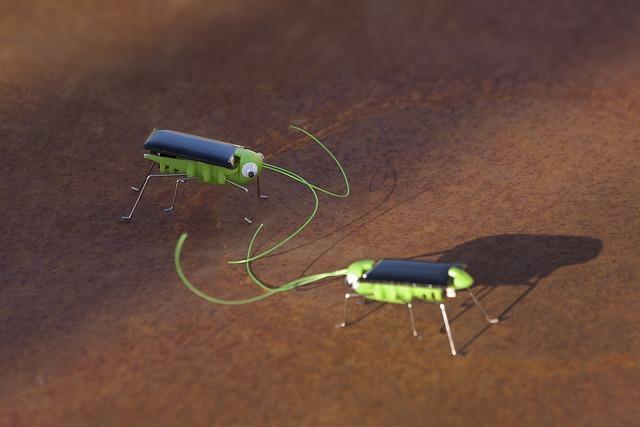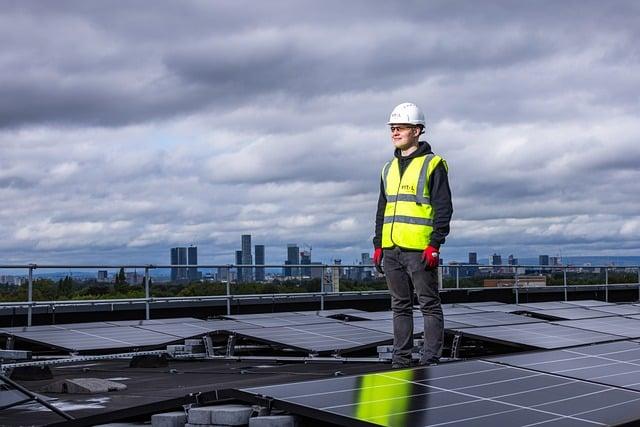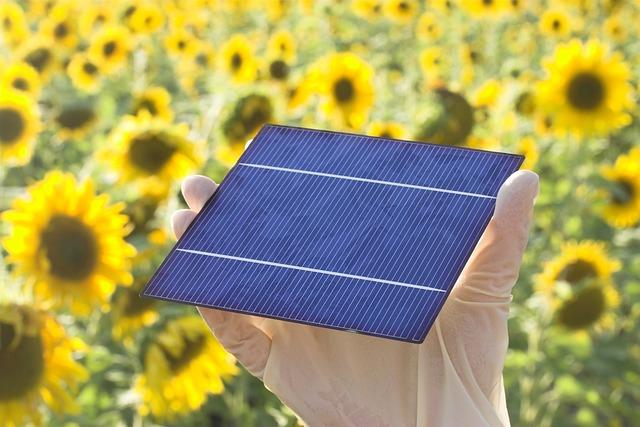- Introduction
- How Quantum Solar Cells Work
- Advantages of Quantum Solar Cells
- Current Progress and Applications of Quantum Solar Cells
- Challenges and Future Development
- Conclusion
- FAQs
- References
Introduction
Quantum solar cells are an emerging branch of solar technology that leverages quantum mechanics to significantly improve energy collection efficiency. Unlike traditional silicon-based solar cells, quantum solar cells use nanocrystals, also known as quantum dots, which offer multiple physical benefits. These next-generation solar cells promise a higher efficiency rate and potential cost reductions in renewable energy. In this article, we will discuss how quantum solar cells work, their advantages over conventional technologies, the current state of progress, and future challenges.
We'll cover how quantum solar cells capture more energy from the solar spectrum, translating into a higher conversion efficiency. Additionally, we'll delve into the advantages of this innovative technology, such as reduced production costs and increased scalability for large projects. Moreover, we’ll provide insight into the current applications, and research progress happening in various parts of the world. Lastly, we'll tackle the main challenges associated with quantum solar cells, including stability and mass production.
How Quantum Solar Cells Work

(Image: Pixabay/@stux)
Traditional solar cells convert sunlight into electricity using the photovoltaic effect, primarily with silicon-based semiconductor materials. However, while classic solar panels lose a portion of the solar spectrum’s energy due to limitations in material absorption capacity, quantum solar cells leverage the unique properties of quantum dots to capture and convert additional light energy.
Quantum dots are tiny semiconductor particles, typically only a few nanometers in size. Their small size allows them to exhibit quantum mechanical effects, particularly concerning how they absorb and emit light. By fine-tuning the sizes of these nanoparticles, engineers can adjust the wavelength of light they absorb, allowing quantum solar cells to capture a wider range of the solar spectrum, including infrared (IR) and ultraviolet (UV) light, which are largely unused by conventional solar cells.
More solar energy absorption translates into better overall efficiency. Currently, most photovoltaic systems convert between 15-20% of the incoming sunlight into electricity. With quantum dot technology, researchers aim to exceed those upper limits. Moreover, quantum solar cells utilize multi-exciton generation (MEG), where a single photon can generate multiple electron-hole pairs, providing even more electrical output.
This property makes quantum solar cells capable of achieving theoretical conversion efficiencies above 40%, which contrasts sharply with conventional photovoltaics that cannot exceed the Shockley-Queisser limit (about 33%). This opens the door to more compact, yet highly efficient, solar panels that would require less space but generate more energy.
Advantages of Quantum Solar Cells

(Image: Pixabay/@This_is_Engineering)
The superior light-harvesting ability of quantum solar cells brings several crucial advantages. One of the most noteworthy is their improvement in energy efficiency. Unlike traditional solar cells, where a significant portion of the solar spectrum is not utilized effectively, quantum solar cells can harness a broader range of wavelengths due to their tunable quantum dots.
Secondly, quantum solar cells are made using materials like cadmium selenide or lead sulfide nanocrystals, which are inexpensive and scalable. As a result, the potential manufacturing costs of this solar technology could be lower than the current silicon-based alternatives. This attribute could make solar energy more affordable and accessible on a global scale, thus accelerating the transition towards greener sources of energy.
Another key advantage lies in the production process itself. Quantum solar cells can be fabricated using solution-based processing methods, which are simpler and consume less energy compared to standard crystalline silicon production. Additionally, their lightweight and flexible form makes them ideal for integration into various surfaces, like windows or other building materials.
Lastly, the durability and long-term stability of quantum solar cells are an ongoing area of research. However, innovations like polymer encapsulation and improved coating techniques hold promise for extending operational lifetimes, making them more resilient in harsh climatic conditions.
Current Progress and Applications of Quantum Solar Cells

(Image: Pixabay/@WelshPixie)
Over the last decade, most of the advancements in quantum solar cells have come from academic laboratories and industrial collaborations. Progress has been made in transforming lab-scale prototypes into more practical, market-ready products. For instance, researchers at MIT and Rice University have achieved conversion efficiencies near 16%, validating the real-world potential of quantum solar cells.
Furthermore, the cutting-edge technology is being explored for potential applications beyond typical solar farms. One notable example is its use in semi-transparent solar panels used in windows. Quantum dots allow for translucent yet efficient energy-harvesting cells that can transform architectural elements into power generators without obstructing natural light intake within buildings.
Other promising applications include portable power solutions for electric vehicles, phones, and Internet of Things (IoT) devices. As the technology matures, we might see quantum solar cells used in increasingly diversified markets—aiding in reducing dependency on fossil-fuel-based energy across industries.
Governments and private sectors worldwide, including companies like Tesla, are closely monitoring the developments of quantum solar cells, fostering an environment of innovation through governments’ policies for green technologies. This symbiosis of public funding and private R&D investments is expected to be a major driving force for advancing quantum solar cell technologies in the years to come.
Challenges and Future Development

(Image: Pixabay/@Rappellingusa)
Despite their compelling advantages, quantum solar cells face a set of challenges that must be resolved before they can reach mainstream markets. One of the critical barriers is material toxicity. Many current high-efficiency quantum solar cells use harmful materials like cadmium or lead, posing environmental risks if not recycled properly. This calls for either complete recyclability of these materials or finding alternative, non-toxic quantum dot compositions that maintain efficiency.
Another challenge lies in the long-term stability of quantum dots when exposed to regular outdoor conditions. Similar to how conventional photovoltaics degrade over time, quantum solar cells need encapsulation methods that protect their active layers from oxidation, moisture, and UV damage.
On the production side, scaling quantum dot synthesis to economically feasible levels remains a subject of ongoing research. Efforts are being directed toward optimizing deposition techniques that offer uniform, high-quality layers on an industrial scale, without negatively affecting cell performance and lifespan.
Addressing these technical hurdles could unlock the full potential of quantum solar cells. Experts predict that breakthroughs in non-toxic materials, protective coatings, and mass production workflows could be witnessed in the coming decade, leading to commercially available quantum solar cell panels that are both high in efficiency and sustainable.
Conclusion
In conclusion, quantum solar cells stand on the precipice of transforming the solar industry. By leveraging quantum dots and advanced photovoltaic mechanisms, these cells surpass the current limits of energy efficiency seen in traditional silicon-based models. With benefits ranging from cost efficiency to adaptability in diverse environments, the development of quantum solar cells is a vital pathway toward achieving global renewable energy targets.
Despite existing challenges related to material costs, toxicity, and longevity, the combination of robust academic research and commercial interest signals a bright future for this technology. As these obstacles are systematically addressed, it is likely that quantum solar cells will play a significant role in the renewable energy infrastructure of tomorrow.
FAQs
What are quantum solar cells?
Quantum solar cells are advanced photovoltaic cells that use quantum dots—nanoparticles capable of absorbing different spectrums of light. They offer higher energy conversion efficiencies compared to traditional solar cells.
How are quantum solar cells different from traditional solar panels?
Traditional solar panels are typically made from silicon and have efficiency limits due to material constraints. Quantum solar cells, however, exploit quantum mechanical properties to capture a more comprehensive range of light wavelengths, notably improving their efficiency.
Are quantum solar cells commercially available?
While quantum solar cells are still largely in the research and prototype stages, significant advancements have been made to bring them closer to commercial deployment. Their accessibility may increase in the coming decade.
What are the environmental concerns around quantum solar cells?
The greatest environmental concern comes from materials like cadmium or lead involved in the fabrication of quantum dots, which are toxic. However, efforts are underway to find safer materials for future generations of quantum cells.
Do quantum solar cells last as long as silicon-based solar panels?
Currently, the stability and durability of quantum solar cells over decades is a challenge. However, recent research focuses on providing coatings and encapsulation techniques that could rival the lifespan of standard silicon solar panels.

